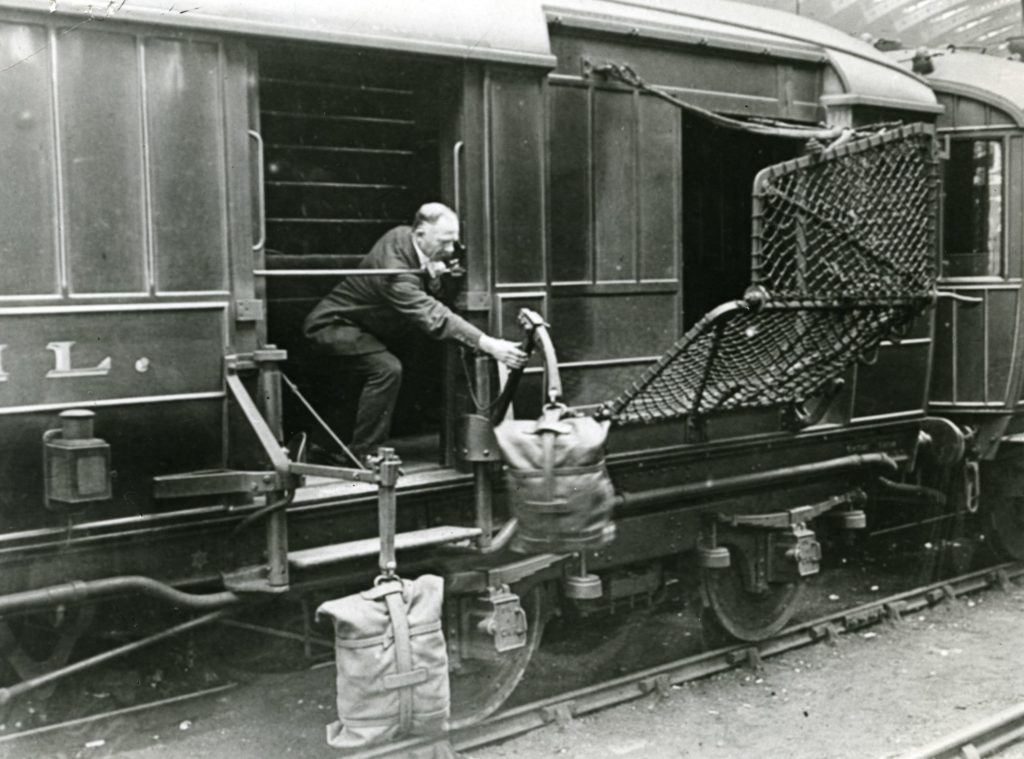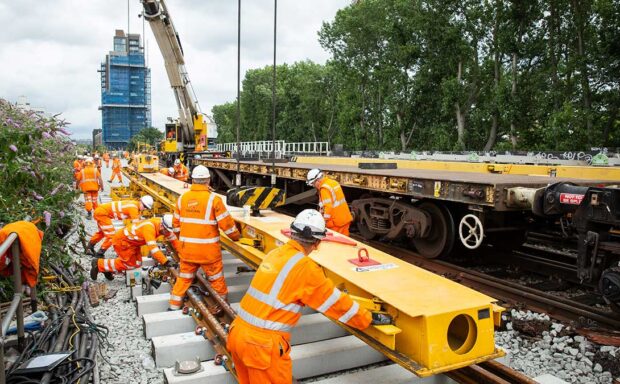We’ve just trialled high-speed parcel deliveries to meet growing demand and bring rail freight into city centres.
By converting passenger trains to take goods directly into central railway stations, we’re getting more post back onto trains – a tradition that goes back almost 200 years.
A trial at London Euston station – which has important history as a mail rail hub – has shown central railway stations have exciting potential to help get goods to consumers and businesses quickly, and more vehicles of our busy roads.
Header image: A Hook of Holland boat train at London Liverpool Street station, 1935. Image courtesy of The Postal Museum.
Georgian origins
Most of our historic railway dates from Victorian times but some of its history – including postal trains – dates from the Georgian era.
British Post Office bosses saw the enormous benefits of the early railways and decided to start moving mail on the tracks in 1830 – seven years before Queen Victoria took the throne.
Royal Mail cites Liverpool to Manchester – one of Britain’s first main line railways – as the first route. It followed a deal between the Liverpool and Manchester Railway and the General Post Office.
Just eight years later, on-board staff began sorting letters in transit, leading to the early Travelling Post Offices (TPOs) – or sorting carriages – according to The Postal Museum.

The National Archives says these comprised carriages on passenger trains hired for the postal service, or special trains operated exclusively for the job.
Huge expansion

Within a decade, the government had used the railway to accelerate the growth of Britain’s postal system.
In 1839, Parliament made private railway companies carry Royal Mail throughout the country at reasonable prices, according to Mail, Rail, and Legwork: State and Nation Building through Postal Service in France and Great Britain, 1830–1914 by Robert M. Schwartz.
As a result, “the expansion of postal services and railway networks went hand in hand,” writes Schwartz. Thousands of post offices would open as a result – and closer to railway stations than ever.
The National Archives said that in the run up to WWI, there were more than 130 TPOs in the UK.
Precarious practices
Fast-paced post required an innovative – and risky – practice. Staff would load most postal bags onto the TPOs at stations. But some trains picked up the bags without stopping.
Workers would snatch the bags hanging from trackside posts and simultaneously drop bags from the train into nets beside the railway line, says The Postal Museum. This dangerous method would continue until 1971.

WWII and post-war

All onboard letter sorting stopped during WWII with just a few crucial bag tenders running, says The National Archives.
After the conflict, daytime TPOs and parcel sorting substantially reduced because more concentrated processing had cut the number and frequency of deliveries and collections.
The British Transport Commission took over the contract for TPOs after the nationalisation of the railways in 1948. Twenty years later, TPOs started carrying and sorting First Class post only.
Decline
But issues with timetabling, cost, falling letters numbers, the flexibility of road services and the dangers associated with working on moving carriages all led to the end of the TPOs, says The Postal Museum.
There were only 24 TPOs left by 1994, with the last one running in 2004.
Mail is still transported by rail today – without any sorting staff on board – and our latest innovation is set to bring more mail back on trains for faster deliveries.

Read more:
Passenger trains converted to deliver parcels to city centres
The Postal Museum – discover more about post’s history in Britain
Love the railway – heritage railways
Meet Britain’s most remote signal box
What happens to signal boxes when they retire?
Step back in time… and inside Britain’s busiest signal box




